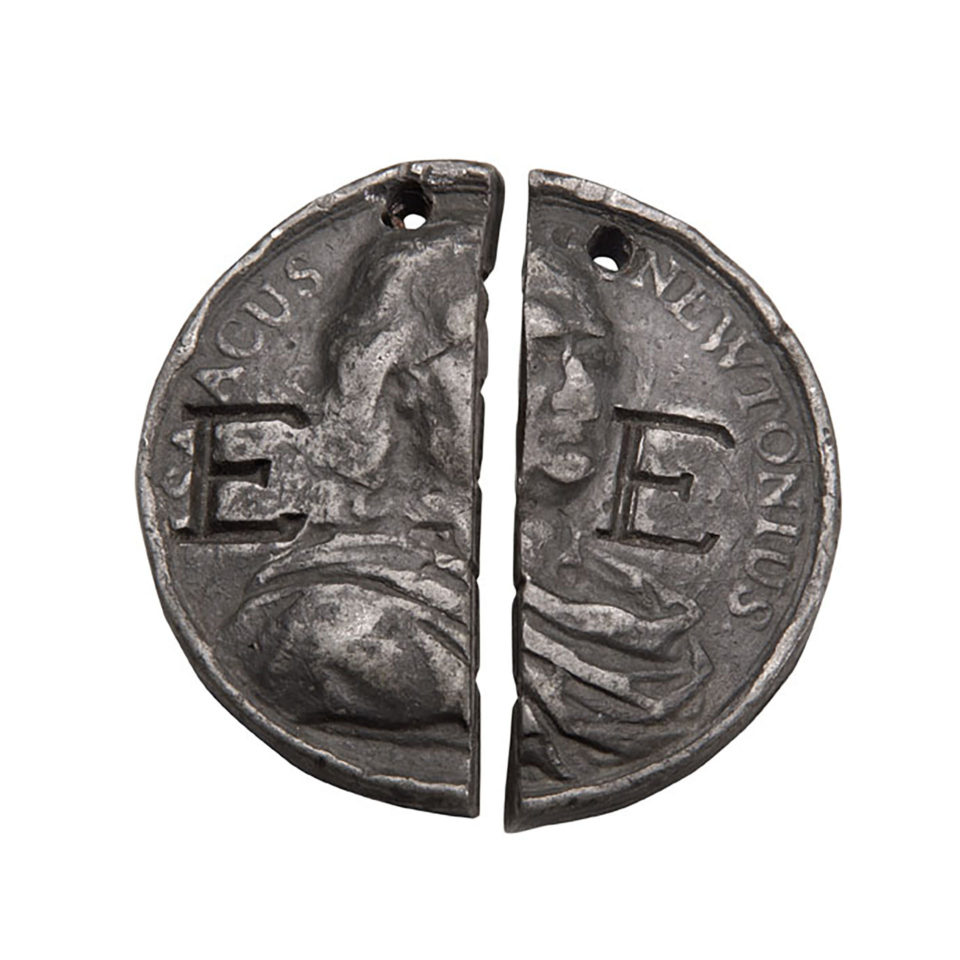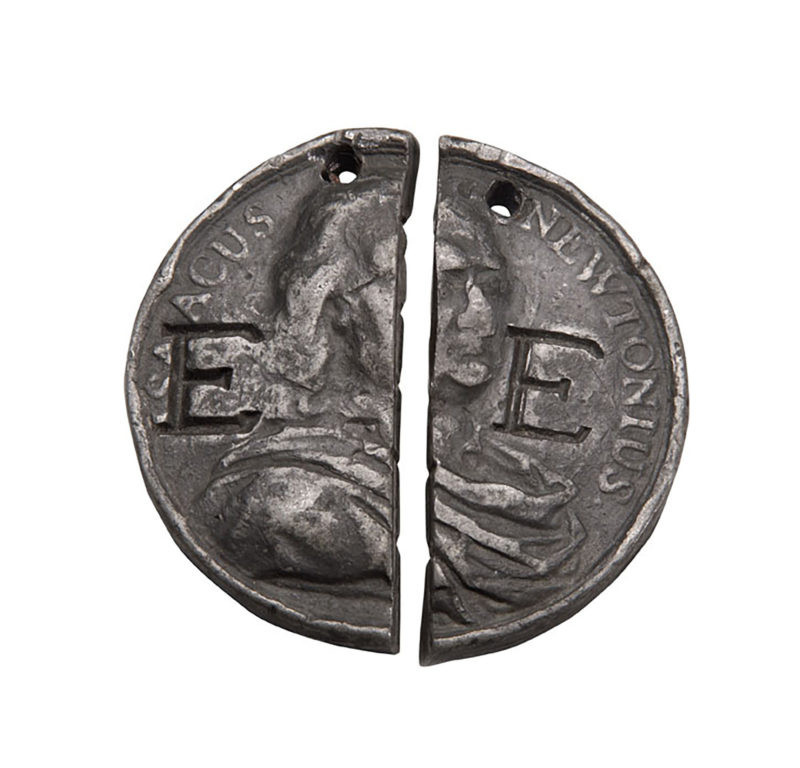About the object
Two Halves
This medal has been cut in half, with both pieces inscribed with the letter E. This might relate to the child’s or the mother’s name. So far, we’ve been unable to match this token with the child it was left with. It’s mysterious that both halves are in the Collection. We might expect the parent to have kept one half in the hope of an eventual reunion. The fact that we have both suggests that the child may have been reclaimed. Each half has been punched with a hole so it could hang from a thread and be worn. The symbolism of divided halves is still used in jewellery expressing love and friendship today.
Sir Isaac Newton
The medal commemorates scientist and mathematician Sir Isaac Newton (1642–1727). One of the most influential scientists of all time, he developed important theories of gravity, light and colour, and the speed of sound. Newton’s face is on the front of the medal and the back depicts his tomb in Westminster Abbey.
Made from tin, it would have been fairly easy to cut the medal in half. Five drill marks down the centre cut edge show where the split has been started. The medal is a copy of a copper version, designed in Switzerland by Jean Dassier, chief engraver of the Geneva mint. The fact that cheap copies were made of this commemorative object reflects the growing public interest in science during the eighteenth century.

